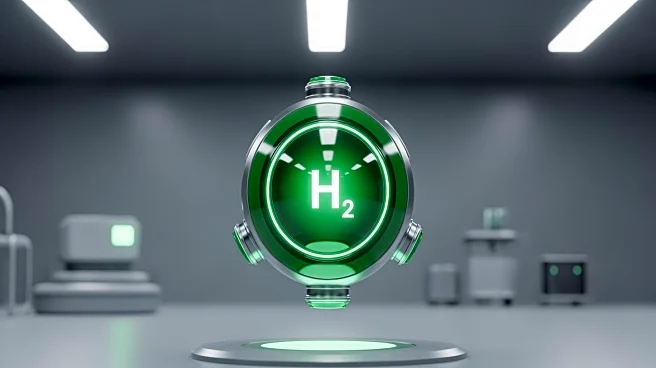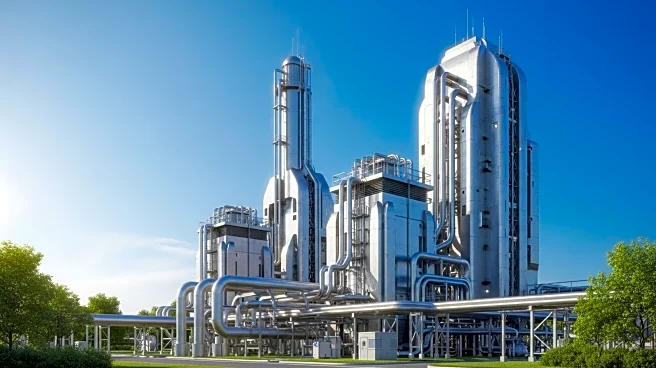What's Happening?
Yamanashi Prefecture has initiated one of Japan's largest green hydrogen projects aimed at achieving carbon neutrality at Suntory Holdings sites. The project, supported by Japan's New Energy and Industrial
Technology Development Organisation, involves a 16 MW hydrogen production facility capable of producing 2,200 tons of green hydrogen annually. This facility will significantly reduce carbon dioxide emissions by approximately 16,000 tons annually. The project includes the use of low-NOx hydrogen boilers to replace fossil fuel-based heat energy at the water plant, marking a substantial step towards decarbonization.
Why It's Important?
The green hydrogen project represents a significant advancement in Japan's transition towards a carbon-neutral society. By integrating renewable energy into hydrogen production, the project aims to supply clean heat to industrial operations, reducing reliance on fossil fuels. The initiative aligns with global efforts to combat climate change and reduce greenhouse gas emissions. As Japan continues to promote hydrogen demand and advance PEM water electrolysis technology, the project sets a precedent for future expansions and innovations in green hydrogen supply.
What's Next?
The project is set to run through the end of 2026, assessing the integration of renewable electricity into hydrogen production for steam generation. Yamanashi Prefecture and its partners plan to continue promoting hydrogen demand and advancing technology as part of Japan's broader carbon-neutral goals. The facility, named 'Green Hydrogen Park – Hakushu,' aims to become a regional hub for green hydrogen supply and innovation, paving the way for similar projects in other regions.
Beyond the Headlines
The project highlights the potential of green hydrogen as a sustainable energy source, offering a clean alternative to fossil fuels. The collaboration between Yamanashi Prefecture and partner companies demonstrates the importance of public-private partnerships in advancing renewable energy technologies. As the project progresses, it may influence policy decisions and encourage further investments in green hydrogen infrastructure, contributing to Japan's energy transition and environmental sustainability.











